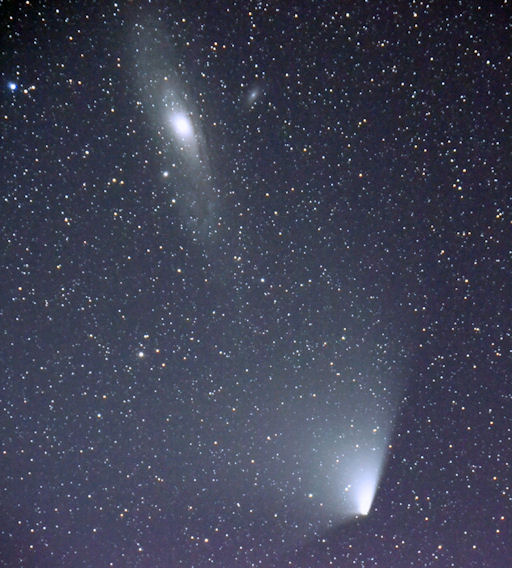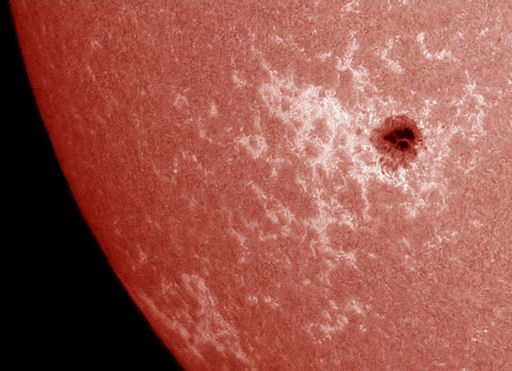Listen to radar echoes from satellites and meteors, live on listener-supported Space Weather Radio. | | |
NO CMEs, NO GEOMAGNETIC STORMS: With no CMEs en route to Earth, geomagnetic storms are unlikely in the next 24 to 48 hours. Polar sky watchers might see some sporadic auroras ignited by fluctuations in the solar wind. Major displays, however, are not in the offing. Aurora alerts: text, voice.
COMET-GALAXY ENCOUNTER: Where does the comet stop and the galaxy begin? There's no clear dividing line in this picture of Comet Pan-STARRS and the Andromeda Galaxy taken last night by Vesa Vauhkonen of Rautalampi, Finland:

"Comet PanSTARRS and Andromeda were almost touching each other," says Vauhkonen. "It was an impressive sight in photos from the frozen lake of Konnevesi, Rautalampi."
In fact, no physical contact has occured. The comet is still in the solar system while the pinwheel star system is 2.5 million light years away. The conjunction is only apparent as Pan-STARRS passes just a few degrees from Andromeda this week.
Both the comet and the galaxy are barely visible to the unaided eye as faint fuzzy patches in the western sky after sunset. To find them, scan the sky with binoculars or set your GOTO telescope to "Andromeda." The view is out of this world.
More about Pan-STARRS: NASA video, 3D orbit, ephemeris, light curves.
Realtime Comet Photo Gallery
MAGNETIC FROTH: Big sunspot AR1711 is not actively flaring. Instead, it is frothing. Sergio Castillo captured the phenomenon on April 2nd when he photographed the sun from Inglewood, California:

Castillo used a "Calcium K" (CaK) filter that passes light from singly-ionized calcium atoms in the sun's atmosphere. CaK filters are excellent detectors of magnetic froth--the bubbly, turbulent sea of magnetism that surrounds many large sunspot groups.
"It is amazing to see how much a calcium filter can show you," says Castillo. "Even 'quiet' sunspots look great."
How long will the quiet last? The sun has not produced a significant flare in more than two weeks. NOAA forecasters say the trend is unlikely to change today with only a slim 5% chance of M-flares and a 1% chance of X-class flares. Solar flare alerts: text, voice.
Realtime Space Weather Photo Gallery
Realtime Aurora Photo Gallery
Realtime Noctilucent Cloud Photo Gallery
[previous years: 2003, 2004, 2005, 2006, 2007, 2008, 2009, 2011]

